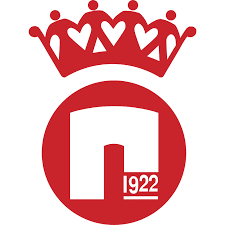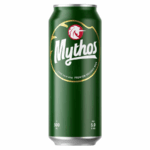Our producers
and artisans
Papadopoulou
A cookie factory born in 1922 that has accompanied Greece's modern history, from family ovens to modern factories, without losing its local accent.




A family of refugees... and an idea of genius
Papadopoulou’s story begins far from Athens, in the kitchen of a Greek family in Constantinople. There, in the early XXᵉ century, the first cookies were shaped and marked using a wooden mold, then sold on the street.
In 1922, the catastrophe in Asia Minor changed the fate of the Papadopoulos family. Forced to flee, they embarked for Greece. During a stopover in Piraeus, she made a surprising observation: the Greeks knew almost nothing about cookies. This discovery gave rise to a simple but brilliant idea: to stay in Athens and develop the art of biscuit-making, which the family had already mastered perfectly.
This choice marked the official birth of the Papadopoulou cookie factory in 1922, the future benchmark for Greek cookies.
From family bake-offs to national icon
Initially, the family moved into refugee accommodation near Lycabetta. The mother kneads and bakes butter rolls; the children sell them in bulk, directly to consumers.
A few products soon became classics:
Petit-Beurre,
the Miranda family,
Sandwich cookies,
- Caprice
Cream Crackers.
In the 1930s, these cookies became part of Greek household habits. They were eaten for breakfast, as an afternoon snack, with coffee or as a snack. In the 1940s, Cream Crackers even served as dry rations for the Greek army.
In 1938, the first small factory in Athens opened its doors. Then, in 1957, a larger unit was built on Petrou Ralli Avenue, marking Papadopoulou’s entry into a new industrial era, without breaking with the family DNA.
The art of biscuit-making: apparent simplicity, constant challenge
A good cookie does not depend on a “magic trick”, but on a sum of details.
At Papadopoulou, these details concern :
the quality and type of flour, which determine structure and crispness,
the right fat (butter, specific vegetable oils) for each recipe,
precise cooking times and temperatures,
the ability to reproduce the same taste, decade after decade.
The cookie maker has never sought spectacular effect. Its strength comes from a remarkable consistency: recognizable crunch, balanced flavor, controlled sugar. It’s these small, controlled deviations that make a Greek identify a Papadopoulou cookie without looking at the packet.
Caprice, Petit-Beurre, Miranda: a catalog that shaped memories
If Papadopoulou has become an institution, it’s not only thanks to its longevity, but also to a few products that have become legendary:
Petit-Beurre, a symbol of simplicity and versatility;
Miranda, often the first cookie served to children;
Cream Crackers, thin and flaky, used at the table or as a snack;
Caprice rolled wafers, created in 1978 and now known far beyond the Greek borders.
Added to this are salted crackers, toasted breads, filled cookies and other cereal products that cover the whole day: from breakfast to evening snack. For many Greeks, Papadopoulou is not just a brand name, it’s “the normal taste” of the cookie.
A company that grows with the country
Papadopoulou has grown with Greece. From a small refugee cookie factory, it has become a major food company, with four production sites (Athens, Thessalonica, Volos and Inofyta) and over a thousand employees.
Despite this dimension, the brand retains a profoundly family-oriented image:
a management team still run by the Papadopoulos family,
a strong link with everyday household life,
an attachment to the slogan: “A world of taste and care”.
In 2022, for its 100th birthday, Papadopoulou was even the subject of an exhibition at Athens’ Benaki Museum, tracing its history alongside that of the country. When a cookie brand enters a museum, it’s because it has gone beyond the status of a mere product to become a piece of culture.
FAQ : Frequently asked questions about Papadopoulou
Why are Papadopoulou cookies so famous in Greece?
Because they’ve been part of Greek daily life since 1922: breakfast, school snacks, coffee at work… Several generations have grown up with their Petit-Beurre, Miranda or Caprice.
Which Papadopoulou cookies should you choose to discover the brand?
For a first approach, Petit-Beurre and Miranda give an idea of the house’s classic style. Caprice and Cream Crackers show the company’s more gourmet and versatile side.
Are Papadopoulou products only sweet?
No. The brand also offers savoury crackers, toasted breads and cereal products that go very well with cheese, charcuterie or spreads.
Does Papadopoulou still exist as a family business?
Yes, the company is still run by the Papadopoulos family, and despite its industrial scale, it clearly asserts its identity as a family cookie factory.
Are Papadopoulou cookies available outside Greece?
Yes, the brand exports to many countries via Greek and Mediterranean grocery stores and certain specialized channels, making it a benchmark for Greek flavors abroad.








